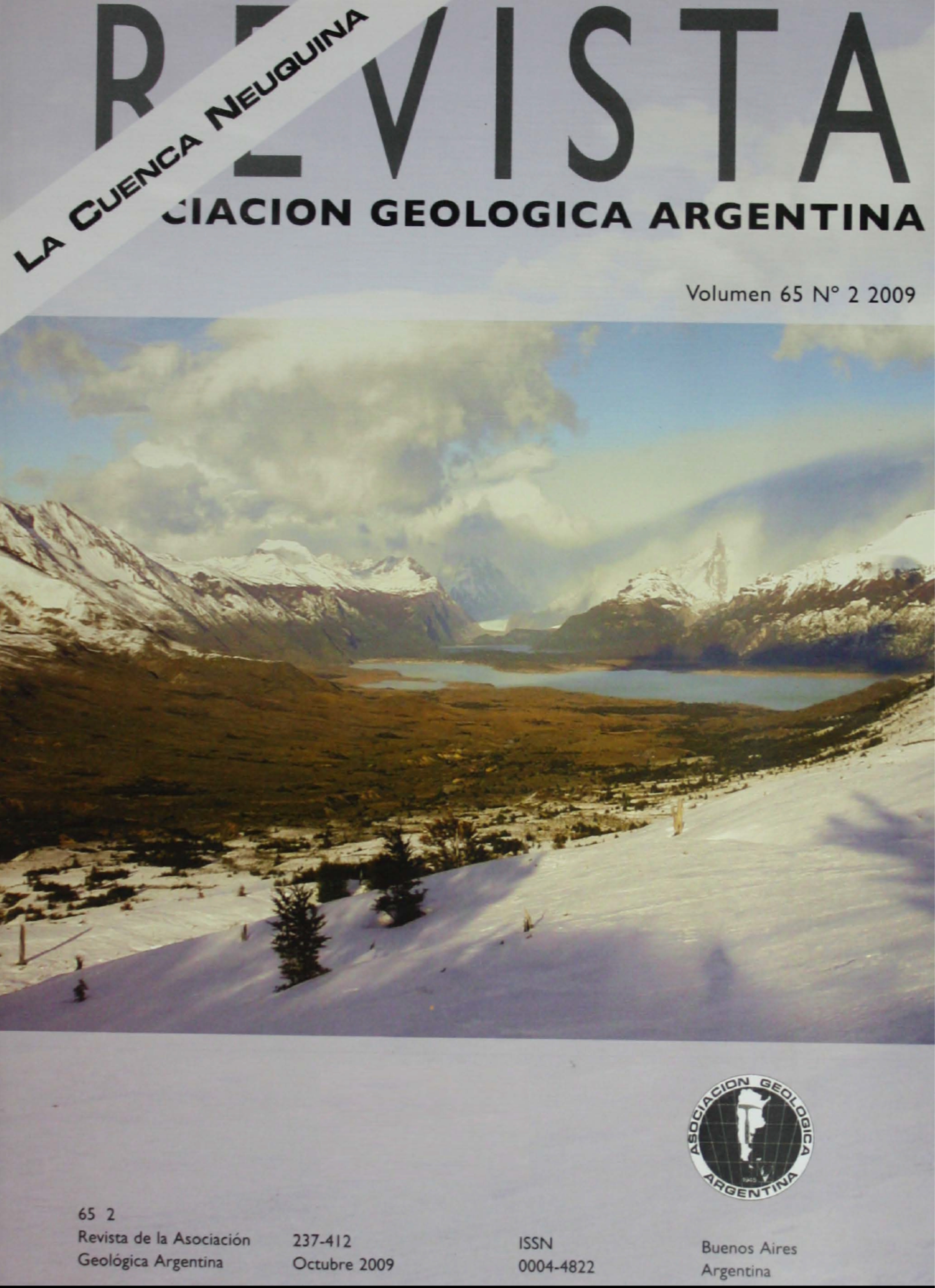Integrated biostratigraphy of the AgrioFormation in its type locality, Early Cretaceous of the Neuquén Basin
Main Article Content
Abstract
The Lower Cretaceous of the Neuquén Basin represents one of the most complete series in the Andes of South America. Highly fossiliferous exposures make correlation easy among different localitiesand allow to perform detailed studies of the fossil content. This paper presents, for the first time, an integrated biostratigraphic zonation for theAgrio Formation in its type section, based on ammonoids, bivalves, nannofossils and palynomorphs. A detailed section from base to top of the Agrio Formation was measured in the Bajada del Agrio region near the junction of Salado andAgrio Rivers in Central Neuquén. Our focus centred on the two marine members. In the field 39 ammonoid levels were identified and 74 samples of black and grey shales were collected to search calcareous nannofossils and palynomorphs. In addition, 41 Steinmanella Crickmay bearing levels and four levels containing Neocomiceramus curacoensis (Weaver) were identified. Four ammonoids zones, eight ammonoids subzones and two bivalve zones were recognizedin the Pilmatué Member encompassing the late Valanginian to the early Hauterivian. Four ammonoids zones and two bivalve zones were recognized in the Agua de la Mula Member encompassing the late Hauterivian and reaching the basal Barremian. Another bivalve zone was identified in the Spitidiscus riccardii Zone, but left undefined due to unsolved taxonomy. The analyzed fossil groupshave mainly tethyan affinities. Correlations to the European standard zonations are possible due to the presence of some index ammonoids, but also due to some nannofossil bioevents. Palynomorphs resulted not very useful inbiostratigraphy. Continental palynomorphs have affinities to Gondwana while marine palynomorphs have clear tethyan affinities. Bivalves have proved locally useful in biostratigraphy, but index species are endemic to the basin and thus difficult to correlate to other regions or continents.
Article Details

This work is licensed under a Creative Commons Attribution-NonCommercial 4.0 International License.
Nota de copyright
Los autores conservan los derechos de autor y garantizan a la revista el derecho de ser la primera publicación del trabajo licenciado según una licencia de atribución Creative Commons que permite a otros compartir el trabajo con el reconocimiento de la autoría y de la publicación en la que se publicó por primera vez.
Declaración de privacidad
Los nombres y direcciones de correo electrónico introducidos en esta revista se usarán exclusivamente para los fines declarados por esta revista y no estarán disponibles para ningún otro propósito u otra persona.

